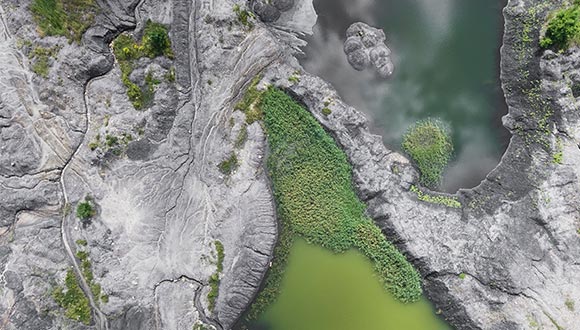Co2 @en
CREAF researchers study climate change-induced permafrost melt in Arctic peat bogs in Alaska
The main carbon store in the planet’s soil is peat, a deposit of plant origin found in water-saturated areas called peat bogs or peatlands. In total, peatlands contain over 550 gigatons of carbon in the form of partially decomposed plant matter, representing 42% of all soil carbon worldwide.
Satellites are overestimating vegetation's ability to absorb atmospheric carbon dioxide
According to an article by CREAF researchers Benjamin Stocker and Josep Peñuelas published in Nature Geoscience, drought impact studies based on satellite data do not factor in the effects of soil moisture.

Fossil fuel emissions hit record high after unexpected growth: Global Carbon Budget 2017
The Global Carbon Budget 2017 has analyzed carbon emission sources and sinks worldwide. This year the researcher Benjamin Stocker from CREAF has collaborated in the report contributing and preparing data about how the change in the use we give to the territory has affected CO₂ emissions.
The greening of the earth is reaching its limit
A new study led by Josep Peñuelas and published in Nature Ecology and Evolution reveals that CO2 abundance in the atmosphere no longer has a powerful fertilizing effect on vegetation. The greening that has been observed in recent years is slowing and this will cause CO2 levels in the atmosphere to rise, thus increasing temperatures and leading to increasingly severe changes in climate.
Do drought-affected trees die of thirst or hunger?
A new study has concluded that, universally, trees that have died from drought are unable to transport water to their leaves. The findings also highlight trees that have drained their carbon reserves since they are not able to carry out photosynthesis. The results of the study will permit the creation of more precise models for predicting the effects of climatic changes on vegetation.
Forest wildfires: learning from the beast
We are in the middle of the wildfire season, and the ecologist Francisco Lloret explains what we can learn about fires and how we can adapt to them to avoid catastrophic large wildfires.
![]()
To Jaume.
Achieving the COP21 agreements is currently far-fetched
The COP21 set the maximum temperature increase for 2100 at 1.5° C. The only scenario which would allow achievement of this goal would require vastly reducing human CO2 emissions, significantly increasing the prominence of renewable energies, and the use of some type of artificial carbon sequestration technology.
That viscous film which envelops the Earth
Life on Earth barely extends over its surface. But organisms have been able to transform its climate for millions of years. Now, humans seem to reach it again in a record time.
![]()
To Joan.
A dangerous metabolism: future remedies against CO2 increase?
Geoengineering is a hope to slow down and reduce CO2 levels in the atmosphere. Technological innovations must help us to find solutions to this global problem.

